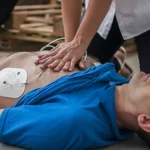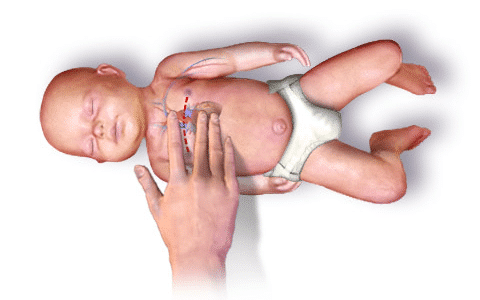The sudden death of babies due to heart attacks or heart failures makes a number of people panic and tremble in fear, most especially parents since they can’t fathom how they would need to act if they were in the situation. The first thing that comes up in most people’s minds is to call for medical help. However, many people are not aware of the next steps. This is where AED CPR certification online comes into the picture.
A person’s chance of survival, whether a child or an adult, decreases as more time goes by since cardiac arrest. Therefore, it is essential to take immediate action such as CPR and other first aid techniques. The way to act when in this stressful emergency is to learn the methods to take action prior to the situation arising.
According to a Pediatric Cardiology, Dr. Mark Sklansky, MD, infants suffering from cardiac arrest are very rare. However, it has occurred lately especially in various cases where the child is likely to have a respiratory failure. Given that these situations are very rare, not many people know the accurate procedure for performing infant CPR.
Given that CPR in babies and adults is essentially the same, there are still some differences to take notice of. For instance, care and gentleness are needed when performing CPR in babies due to their fragile bodies. With this being said, there are a few reminders that one should need to keep in mind before performing CPR on a baby, which are the following:
- Check the condition of the child and the scene. Ensure that the place is safe then gently tap the shoulder of the child or flick the bottom of his foot to stimulate a response.
- Call 911.
- If the child or baby is unresponsive to movements and medical assistance is still on the way, begin CPR.
There are a number of steps when performing CPR on an infant, which are as follows:
- Place the baby on his/her back on firm, flat surfaces such as a table or a floor.
- Place two fingers of each hand below the infant’s chest.
- Gently compress for about 1.5 inches or 4 centimeters.
- Count aloud as you pump in a rate of 100 to 120 compressions a minute.
- After 30 compressions, gently tip the head back by lifting the chin with one hand and pushing down on the forehead with the other hand to open the airway.
- In just a few seconds, check for signs of breathing. Look for chest motion, listen for breath sounds, and feel for breath on your cheek and ear.
- Prepare to deliver rescue breaths if the infant isn’t breathing. Make a complete seal by placing your mouth over the child’s mouth and nose, and blow in for a second to make the chest clearly rise. Deliver two rescue breaths afterward.
- Give two breaths after every 30 chest compressions.
- Perform the CPR for about two minutes.
- Continue CPR until you see life signs or the medical assistance has already arrived.
Key Takeaway
Immediate CPR must be given to prevent the occurrence of death. When this is performed correctly, it can help deliver oxygen to the brain and other organs until the baby recovers or the medical help arrives. However, knowing or researching the steps in performing CPR does not replace real hands-on online first aid CPR training. This is why it is still best for people to entertain thoughts of taking up CPR courses which are available online at the American Health Care Academy. The training is simple and takes a few hours to learn. This will definitely aid you in executing cardiopulmonary resuscitation when a sudden emergency happens. Visit the Healthcare Academy login page today.













